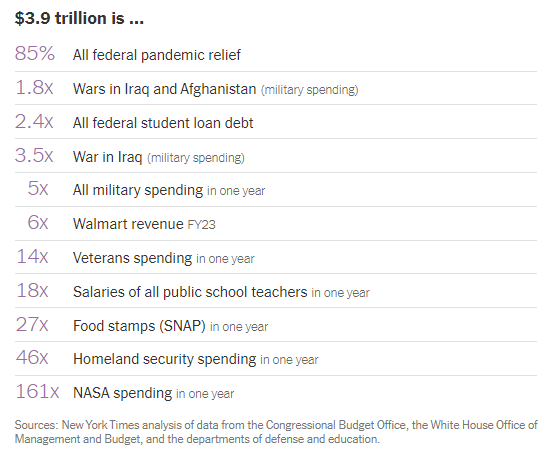“Without a doubt, this is the most important thing that has happened to the federal budget in the last 20 years,” is a provocative statement and one I thought my students would be interested in reading about, especially when it is surrounded by mystery in the article: A Huge Threat to the Budget has Receded and No One is Sure Why. The following graphic shows the runaway Medicare spending per beneficiary that Ronald Reagan first warned about in 1983 mysteriously flatlining around 2011 just as Barack Obama was saying: “if you look at the numbers, then Medicare in particular will run out of money and we will not be able to sustain that program no matter how much we raise taxes.”

Yes, let’s look at the numbers! I don’t want to spoil your surprise as to what the possible reasons are for the $3.9 trillion in savings that the Budget Office computes, but its a compelling way to engage your class in an important public policy issue. The graphic is giving rates per beneficiary and as always there are nice questions you can ask about what the numbers mean and how they were computed. In particular where the estimated $3.9 trillion is coming from was more difficult for them to answer than I anticipated. The article also makes nice comparisons to put this giant dollar amount in perspective, making it a perfect article for early in the semester when we are discussing ratios!
My favorite question from the quiz was asking students to place the $100 billion in estimated savings from the new Medicare prescription drug policy in the table. This requires students to grapple with exactly how the multiples are being computed and then deal with trillions versus billions. As you can imagine, not many of them were able to answer this one correctly!
We had really productive conversations about health care in the U.S. based on the information in the article. Most of my students had no idea what Medicare was and how it relates to Social Security. The article warns that we are just one medical breakthrough away (like an effective Alzheimers treatment) from having costs soar again. Figuring out the logic of this statement was a good reasoning exercise for them. Whether Medicare costs per beneficiary can remain flat remains a trillion dollar question!
QUIZ:
- In the article, A Huge Threat to the U.S. Budget Has Receded. And No One is Sure Why., they give us the following graphic (first one above):
- Compute the ratio of projected to actual spending per beneficiary in 2023 and scale the second quantity to one.
- Use your ratio in a meaningful sentence.
- Explain where the $3.9 trillion that the article discusses come from in the graphic above?
- What are two plausible explanations for the cost savings given in the article?
- The article includes this nice table giving comparisons:

- Use the table to compute all federal student loan debt.
- The article says that the new Medicare prescription drug policy will save $100 billion over a decade. Where would that show up in the table above?
- Joel Best talks about problem promoters who organize effective campaigns to “create social problems” like out of control Medicare spending.
- Why would Republican lawmakers (like Mitt Romney in 2012) consider Medicare spending a big problem?
- Why would an effective Alzheimer’s drug make Medicare spending a problem again?
Discussion
No comments yet.